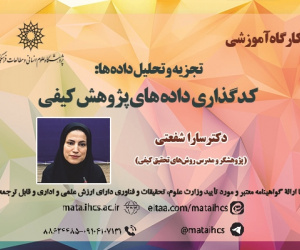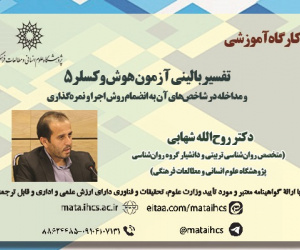نقش سواد رسانه ای در ارتقاء هویت فرهنگی، دینی و اجتماعی دانش آموزان(مطالعه موردی: دانش آموزان مقطع متوسطه دوم شهر شیراز)
آرشیو
چکیده
این پژوهش به لحاظ هدف کاربردی و به لحاظ روش انجام پژوهش توصیفی همبستگی است. جامعه آماری پژوهش حاضر شامل دانش آموزان مقطع متوسطه دوم می باشند که تعداد کل آنها 3852 نفر می باشد که بر اساس جدول مورگان 350 نفر به روش خوشه ای چندمرحله ای انتخاب می شوند روش گردآوری اطلاعات از دو روش کتابخانه ای و میدانی صورت می گیرد. در گردآوری اطلاعات تئوری از روش کتابخانه ای و در گردآوری اطلاعات عملی از روش میدانی استفاده می شود. ابزار سنجش شامل پرسشنامه های سواد رسانه ای ( فلسفی، 1393). هویت فرهنگی- اجتماعی و پرسشنامه هویت دینی بودند. به-منظور تجزیه و تحلیل داده ها از نرم افزار آماری spss در دو بخش آمار توصیفی و استنباطی استفاده شد. در بخش توصیفی از میانگین و انحراف معیار و در بخش آمار استنباطی از آزمون های ضریب همبستگی پیرسون و رگرسیون استفاده گردید. نتایج نشان داد سواد رسانه ای بر هویت فرهنگی، دینی، اجتماعی دانش آموزان تأثیر دارد.The Role of Media Literacy in Promoting Students' Cultural, Religious and Social Identity (Case Study: High School Students in Shiraz)
This research is applied in terms of its purpose and descriptive correlational in terms of its method. The statistical population of the present study includes high school students, a total of 3852 people, of whom 350 are selected using a multi-stage cluster method based on the Morgan table. The data collection method is carried out using two methods: library and field. The library method is used to collect theoretical information and the field method is used to collect practical information. The measurement tools included media literacy questionnaires, socio-cultural identity, and religious identity questionnaires. In order to analyze the data, SPSS statistical software was used in two sections: descriptive and inferential statistics. In the descriptive section, mean and standard deviation were used, and in the inferential statistics section, Pearson correlation coefficient and regression tests were used. The results showed that media literacy has an effect on students' cultural, religious, and social identity.








